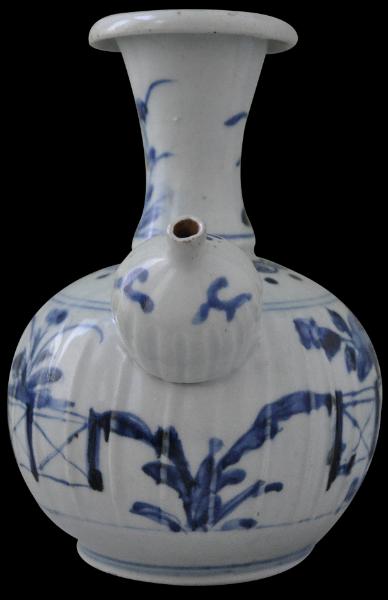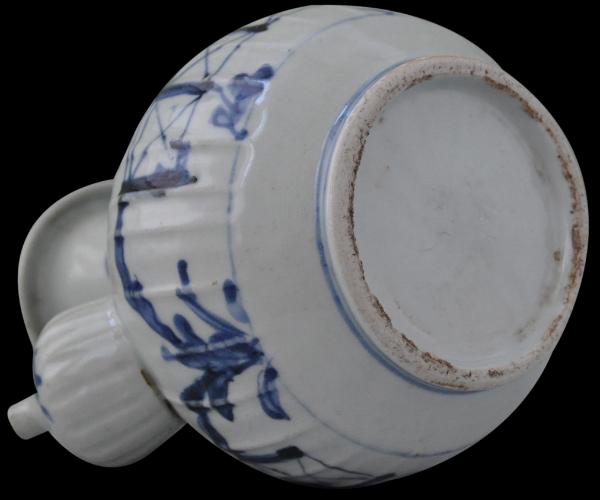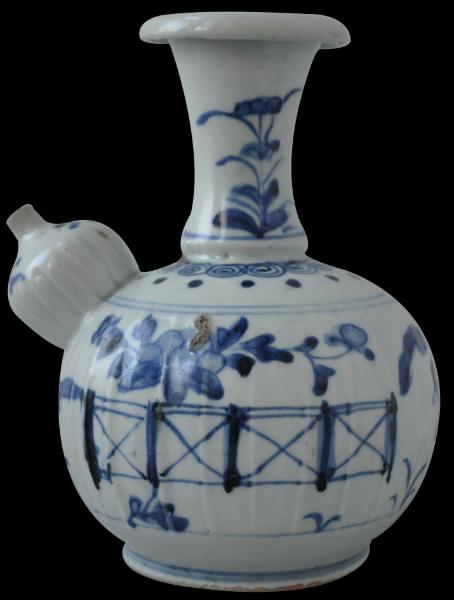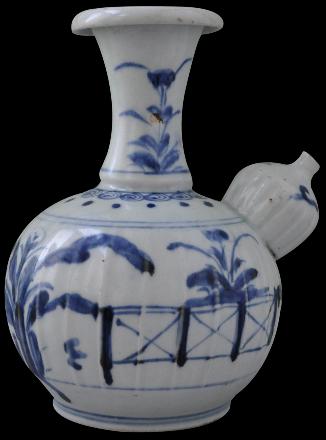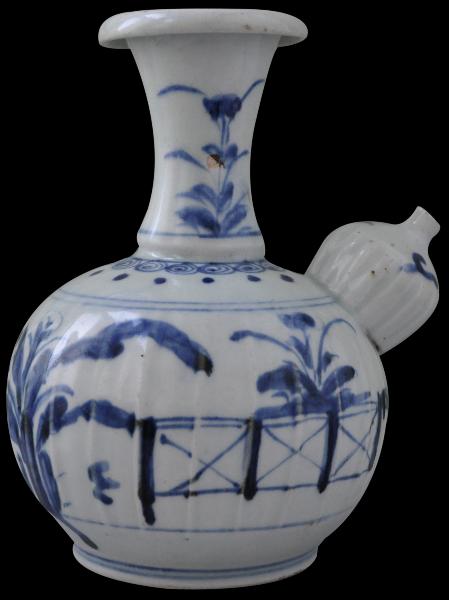
Arita Kendi
Porcelain Kendi Decorated with Underglaze Blue made for the Islamic Southeast Asian Market
Arita, Japan
Edo Period, 1660-1685
height: 20.5cm, diameter of rim: 7.8cm
Vessels of this form, known as kendi, with a bulbous body, a thin neck widening to a broad-rimmed mouth and with a bulbous spout with only a small opening designed for drinking from were used in Islamic Southeast Asia for storing and emitting drinking water.
The Chinese began exporting
kendi in the Tang dynasty. They were produced in China for export only; they were not of a form that was used domestically.
By the seventeenth and eighteenth centuries,
kendis for export were also being produced in Japan, Thailand and Vietnam.
This Arita ware example, from Japan, dates to the second half of the seventeenth century. It sits on a low ring foot and is decorated in blue underglaze with garden landscape scenes.
This example is in very fine condition with no chips, repairs or cracks (hairline or otherwise.). There are two areas of kiln grit to one side only.
The Art Gallery of New South Wales has a similar example, with underglaze blue decoration and similar ribbing to the base and to the spout (see inventory number 84.1986 or click
here
to see the piece.) A more colourful example is in the National Museum of Indonesia, (see Kartiwa, 1997, p. 111 for an illustration.)
This example came from within the UK. It is quite likely that it has been in the UK since the colonial era and that it might have come in the first instance from Malaysia, to where
kendis of this type were exported from Japan.
Provenance
UK art market
References
Kartiwa, S. (ed.), Treasures of the National Museum, Jakarta, Buku Antar Bangsa, 1997.
Inventory no.: 1485
SOLD

